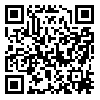Volume 6, Issue 1 (January 2022)
AOH 2022, 6(1): 1171-1182 |
Back to browse issues page
Download citation:
BibTeX | RIS | EndNote | Medlars | ProCite | Reference Manager | RefWorks
Send citation to:



BibTeX | RIS | EndNote | Medlars | ProCite | Reference Manager | RefWorks
Send citation to:
Philippe Henri D, Jean L. Validity of Estimating the 3 kHz Audiometric Threshold by Averaging the Thresholds at 2 and 4 kHz in Cases of Noise-Induced Hearing Loss. AOH 2022; 6 (1) :1171-1182
URL: http://aoh.ssu.ac.ir/article-1-265-en.html
URL: http://aoh.ssu.ac.ir/article-1-265-en.html
1- Federal Agency for Occupational Risks, B-1210 Brussels, Belgium , ph.dejonckere@outlook.com
2- Institute of Neurosciences, University of Louvain, B-1200 Brussels, Belgium
2- Institute of Neurosciences, University of Louvain, B-1200 Brussels, Belgium
Abstract: (1676 Views)
Background: Hearing thresholds at 3000 Hz are generally not measured in routine clinical audiometry. However, for purposes other than clinical diagnosis, the threshold at 3 kHz has many applications, in epidemiological studies in the field of occupational health and medicine, as well as in (medicolegal) quantification of physical impairment due to hearing loss, particularly noise-induced hearing loss (NIHL). The present study addressed the validity of estimating, in the case of NIHL, the 3 kHz-audiometric thresholds by averaging the thresholds at 2 and 4 kHz. Methods: All 200 investigated subjects (400 ears) had a well-documented noise exposure, moderate to severe NIHL, and underwent, as they were claiming for compensation, a detailed medicolegal audiological investigation, including beside pure tone audiometry, electrophysiological objective frequency-specific threshold definition using cortical evoked response audiometry (CERA) and auditory steady-state response (ASSR). Results: The study results showed a good correlation between the 2-4 kHz interpolation and the actual 3 kHz threshold; the error may be around 2 dB on average. However, in individual cases, the results demonstrated that the error due to interpolation exceeds 5 dB HL in about one-quarter of the cases. This error is predictable; the larger the 2- 4 KHz difference (which reflects the steepness of the left slope of the audiometric notch), the larger the error (on either side) made by interpolating. Conclusion: For epidemiological studies with large amounts of data, the interpolated threshold (average of 2 and 4 KHz) may be considered as a valid estimate of the true value of the 3 KHz threshold. More caution is required in individual cases: the error due to interpolation exceeds 5 dB HL in about one-quarter of the cases, but this error is predictable.
Type of Study: Research |
Subject:
Special
Received: 2021/07/15 | Accepted: 2022/02/6 | Published: 2022/02/14
Received: 2021/07/15 | Accepted: 2022/02/6 | Published: 2022/02/14
Send email to the article author
| Rights and permissions | |
 |
This work is licensed under a Creative Commons Attribution-NonCommercial 4.0 International License. |





